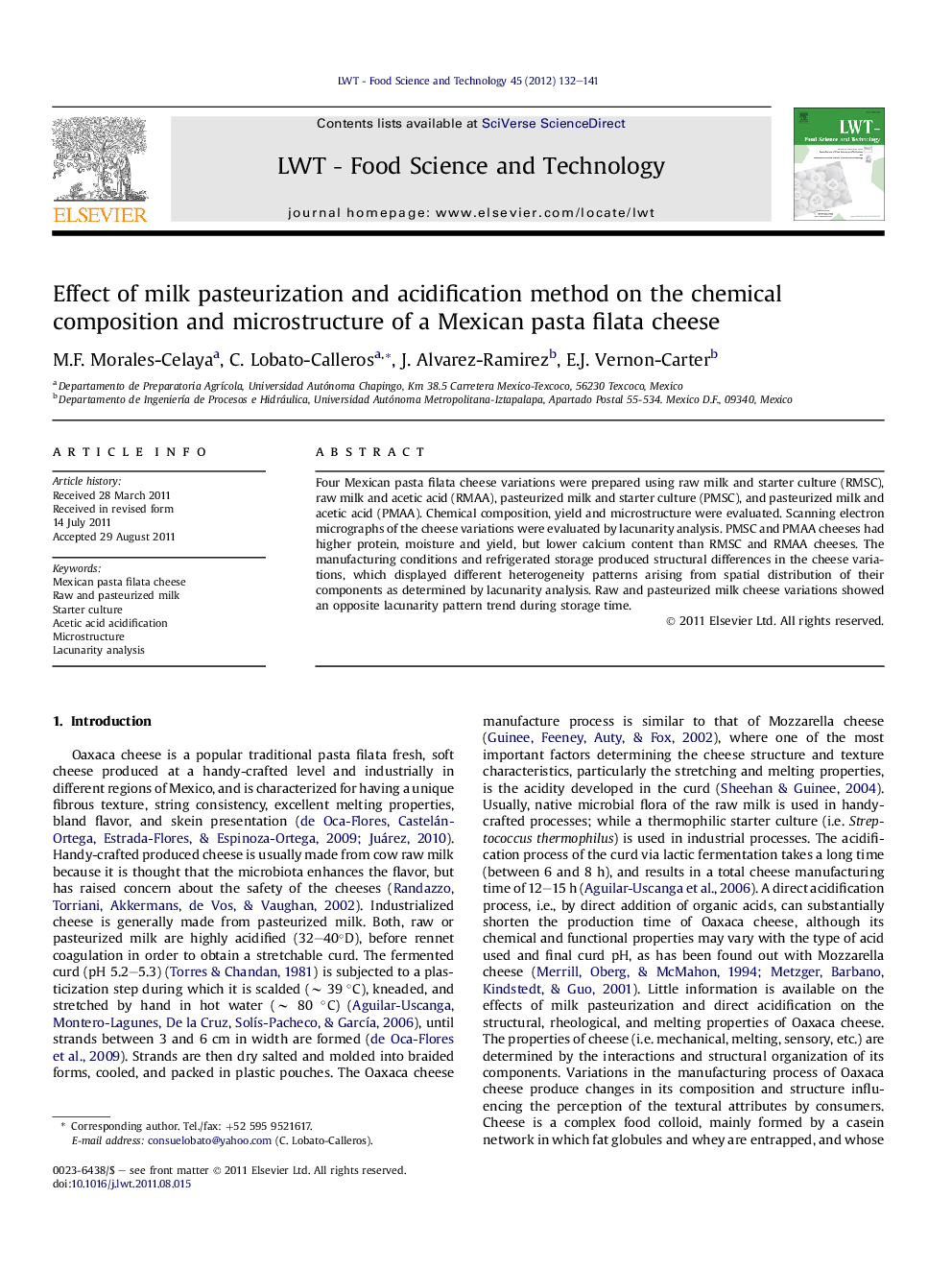| Article ID | Journal | Published Year | Pages | File Type |
|---|---|---|---|---|
| 6405637 | LWT - Food Science and Technology | 2012 | 10 Pages |
Four Mexican pasta filata cheese variations were prepared using raw milk and starter culture (RMSC), raw milk and acetic acid (RMAA), pasteurized milk and starter culture (PMSC), and pasteurized milk and acetic acid (PMAA). Chemical composition, yield and microstructure were evaluated. Scanning electron micrographs of the cheese variations were evaluated by lacunarity analysis. PMSC and PMAA cheeses had higher protein, moisture and yield, but lower calcium content than RMSC and RMAA cheeses. The manufacturing conditions and refrigerated storage produced structural differences in the cheese variations, which displayed different heterogeneity patterns arising from spatial distribution of their components as determined by lacunarity analysis. Raw and pasteurized milk cheese variations showed an opposite lacunarity pattern trend during storage time.
⺠Pasteurization and acidification methods affect the microstructure of filata cheese. ⺠Cheese based on raw milk resembles the regional Oaxaca cheese. ⺠Image analysis indicates that lacunarity of microstructure increases with storage time. ⺠Microstructure changes are induced by protein rearrangement and water draining.
